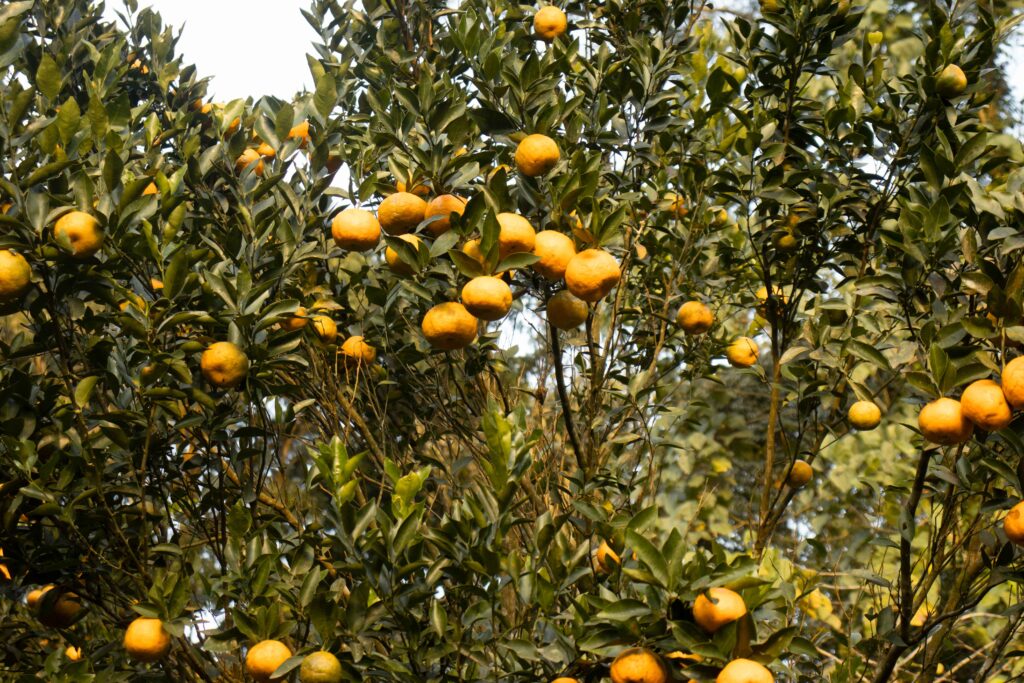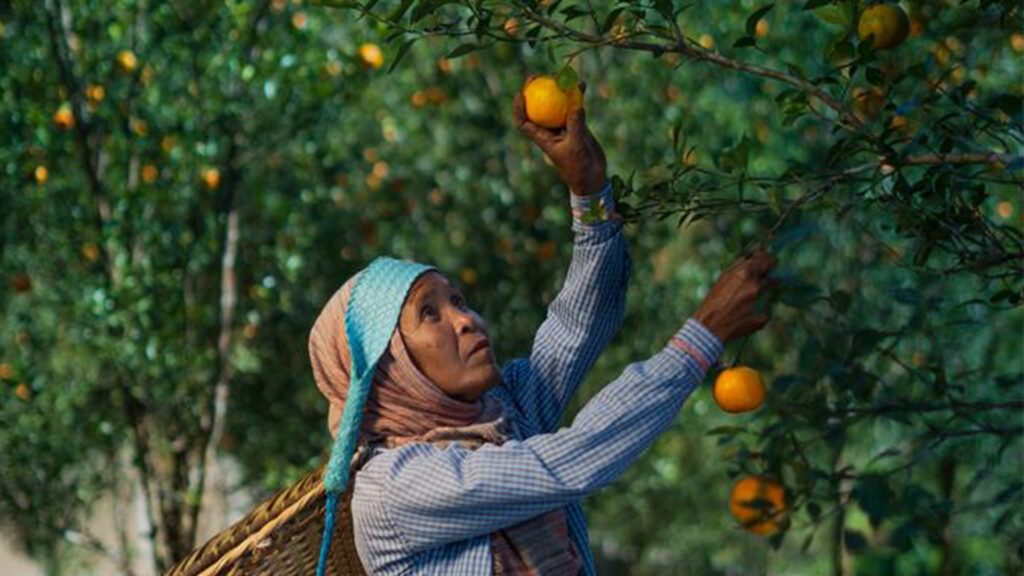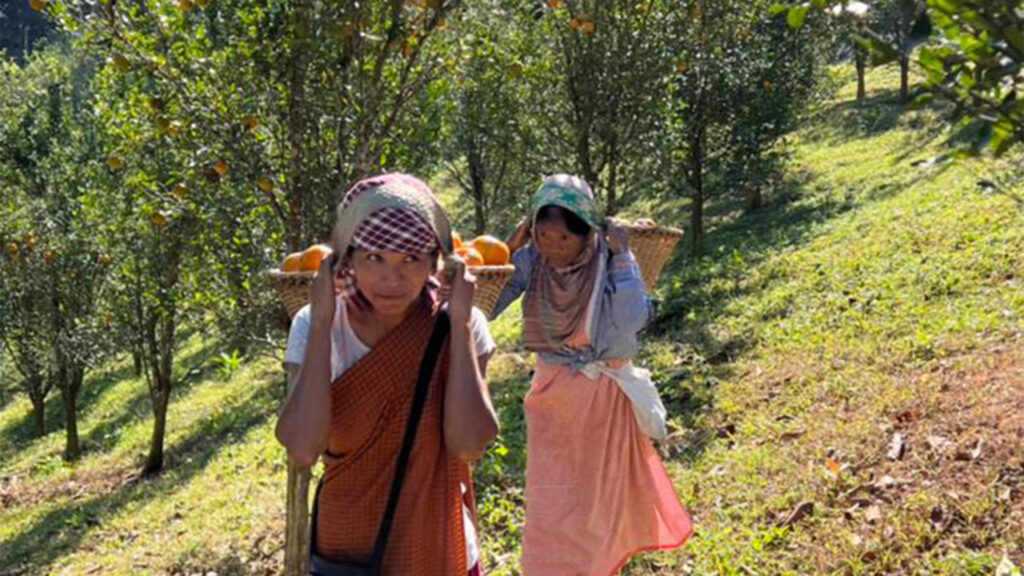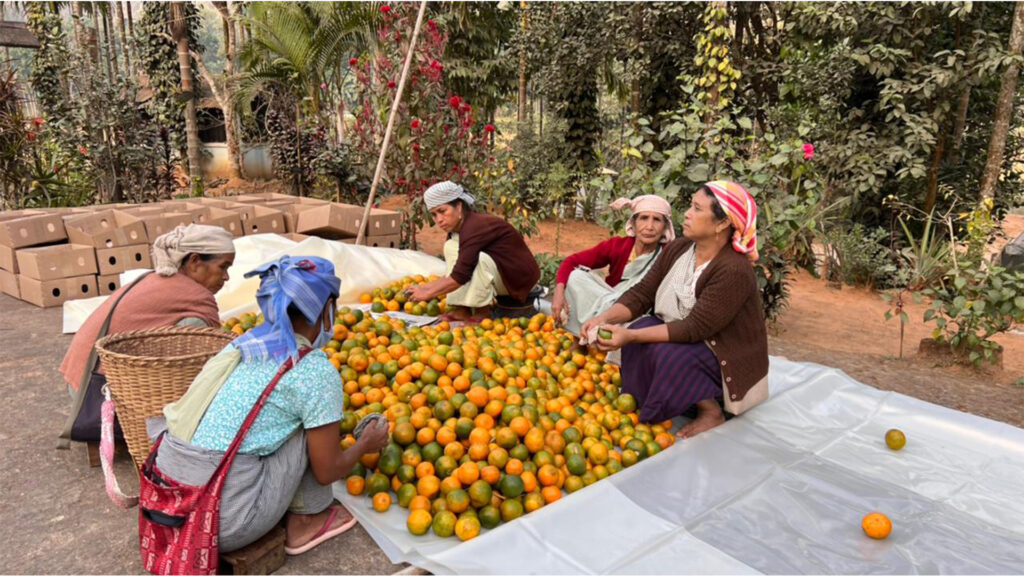Meghalaya Mandarin
Khasi Mandarins are characterized by their small to medium size, thin, easy-to-peel skin, and its sweeter taste unlike the rest of citrus species. The Gl tagged produce is locally called Soh Sohra in Khasi and Komola in Garo. It’s often referred to as the King of Oranges as it’s one of the most loved oranges in the world.
Meghalaya Khasi Mandarin production area lies between 250 1’ and 260 5’ North latitudes and 850 49’ and 920 52’ East Longitudes.
Unlike some other fruits, citrus fruits do not ripen further once they have been removed from the tree, so it is important that they are picked at the right stage of maturity and these farmers do the perfect job of picking it at the right time with their generations-old teachings.

During the month of November, the markets in Meghalaya are coloured with golden orbs, Khasi oranges or the Khasi Mandarin. Just holding one in your hand you get that endearing whiff of the sweet, orangey scent. In fact, the Khasi mandarin has a load of bioactive compounds with many health benefits. Healers have traditionally utilized it as a cure that recent experiments have empirically proven to be true.
Importance of this initiative to the locals
Given the diverse and fertile agro-climatic conditions and the natural scenic beauty of the state, the significant majority of the population of the state is engaged in agriculture and tourism for their livelihoods. Thus it becomes imperative to sustainably develop both these sectors for the overall development of the state and strengthening of livelihoods of its citizens.To compete with the relatively progressive farmers of mainland India, there is a need to increase both productivity and the area under production. Thus, efforts should be directed towards area expansion of agro-ecologically suitable and commercially beneficial crops. This will enable the farmers to benefit from the economies of scale and make processing financially viable.


